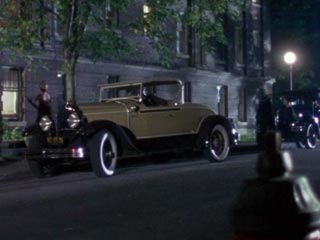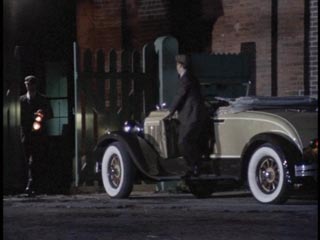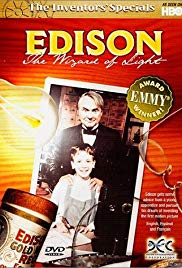EDISON: THE WIZARD OF LIGHT
SUBJECTS — Science-Technology; U.S./1865 – 1929; Cinema; Biography;
SOCIAL-EMOTIONAL LEARNING — Talent; Disabilities;
MORAL-ETHICAL EMPHASIS — Caring; Citizenship.
AGE: 6 – 12; No MPAA Rating;
Drama; 1998; 53 minutes; Color.
MENU
MOVIE WORKSHEETS & STUDENT HANDOUTS
TWM offers the following worksheets to keep students’ minds on the movie and direct them to the lessons that can be learned from the film.
Film Study Worksheet for a Work of Historical Fiction and
Worksheet for Cinematic and Theatrical Elements and Their Effects.
Teachers can modify the movie worksheets to fit the needs of each class. See also TWM’s Historical Fiction in Film Cross-Curricular Homework Project.
DESCRIPTION
This film relates the story of Thomas Edison and a fictional boy that he saves from an orphanage and from the police. “Edison: The Wizard of Light” is one of the Inventors’ Specials, an award-winning series designed to introduce children to great scientists and inventors.
SELECTED AWARDS & CAST
Selected Awards:
1998 KIDS FIRST! Endorsement from the Coalition for Quality Children’s Media; First Place “Gold Camera Award” from the 1999 U.S. International Film and Video Festival; 1999 Emmy Award winner – Outstanding Achievement in Sound Mixing; Nominated for two Golden Sheaf Awards at the 1999 Yorktown Short Film & Video Festival; Nominated for a 1999 Banff Rockie Award; Nominated for Five 1999 Emmy Awards including Outstanding Children’s Special & Best Performer;
Featured Actors:
Kenneth Welsh, Michael Suchanek, Jessie Collins, Susannah Hoffman, and David Dorch.
Director:
David Devine.
BENEFITS OF THE MOVIE
“Edison: The Wizard of Light” will introduce children to Thomas Edison, the glory of invention, the concept of patents, and the birth of the film industry.
POSSIBLE PROBLEMS
None.
PARENTING POINTS
Tell your children that Thomas Edison invented more things that people used in the 20th century than any other person. They include: the light bulb; the phonograph; the motion picture camera and projector; the first commercial electric light and power system, the alkaline storage battery; the dictating machine; the carbon-button transmitter used in telephone speakers and microphones; the mimeograph; the fluoroscope and many more. Edison was granted 1,093 patents, more than any other individual. Entire industries grew up around many of Edison’s inventions. The movie industry, the music recording industry, and the battery industry are examples. Many of Edison’s inventions led to the creation of new products such as tape recorders, CD players, VHS, DVD, etc.
Ask and lead your children through the answer to the Quick Discussion Question. Tell your children that from the time he was a young boy, Edison was almost completely deaf due to a childhood illness.
HELPFUL BACKGROUND


The inventions of Thomas Alva Edison (1847 – 1931) changed the world. They include: the incandescent light bulb; the phonograph; the motion picture camera and projector; the first commercial electric light and power system, including a revolutionary generator of unprecedented efficiency; the alkaline storage battery; the dictating machine; numerous improvements to the stock ticker and to the telegraph; the carbon-button transmitter that, until the end of the 20th century, was still used in telephone speakers and microphones (it might still be used today; we don’t know); the mimeograph; the fluoroscope and many more. Edison was granted 1,093 patents, more than any other individual.
Edison was an industrial entrepreneur, making and selling many of his inventions and creating entire industries. The primary example is the electric power industry. Edison invented and made the light bulb and other products which used electricity. He invented and manufactured the generators which provided the power. Finally, he invented, manufactured and installed the lines which connected the generators to homes, offices, stores, and factories. Edison also created and ran the company which operated the electrical system. Another example of Edison’s entrepreneurship was his production of Portland cement. The concept itself was created in England. Edison recognized the potential of the product and found a source for limestone, the key ingredient. He then invented and built the machines which extracted, sorted and crushed the limestone and which mixed, tested and bagged the cement. He ran the company, selling millions of pounds of cement. (Babe Ruth had some help building Yankee Stadium. 180,000 bags of Edison’s Portland Cement, at 94 lbs. per bag, were used in the construction.)
Much of Edison’s work involved improving the inventions of others. For example, after Alexander Graham Bell invented the telephone, Edison improved it dramatically by inventing the carbon button transmitter which allowed for greater volume, clear transmission of inflection in the voice, and better distinction between vowels and consonants.
Edison relied on a team of skilled technicians to carry out projects at his laboratories. He created the world’s first industrial research laboratory designed to systematically generate inventions. The technicians who worked with him formed a band of supporters whose loyalty was prized by Edison.
Edison made many mistakes in his career and followed many blind alleys. Among the most notable are:
Seeing radio as a threat to his beloved phonograph, Edison misjudged its importance and refused to permit his company to enter the radio industry until it was already dominated by others.
Edison was a proponent of direct current electricity. For years he opposed and tried to prevent the introduction of alternating current. This gave an opening to other entrepreneurs to enter the electric generating industry.
Edison was an early presence in the motion picture industry, but he concentrated on single viewer projectors and was late in marketing films to large audiences in theaters. His effort to dominate and limit the industry by bringing patent infringement suits against producers of rival projectors was unsuccessful.
Edison spent years attempting to revive the iron ore mining industry on the East Coast of the United States. Iron ores in that area were generally of low quality and not sufficiently concentrated to compete with the ores produced in the Midwest. Edison invented an improved method of extracting the ore, bought up mining properties, and invented machines to crush the ore bearing rocks and separate the ore. He spent years focused on this project, sold some ore, and sold the machines that he had invented to other mining companies. But Edison was never able to make the process efficient enough to compete with the iron ore brought in from the Midwest. He lost money on the project and it was eventually abandoned. The effort was not completely wasted. The machines Edison invented for crushing rock were recycled, years later, into his immensely profitable Portland cement company.
Edison was frequently in court attempting to defend his patents and choke off competition. He recognized that a patent was only as good as one’s ability to defend it through litigation.
Famous quotations from Edison:
“Genius is one percent inspiration and 99 percent perspiration.”
“I was always afraid of things that worked the first time.”
Edison lived for his work. When he was 80 years old, he began the search for a source for natural rubber among the plants found in the United States. He created what is still the most complete catalogue of latex bearing plants that grow in the United States. Settling finally on the weed goldenrod, Edison was preparing for production when he died at the age of 84. His efforts were continued by his friend Henry Ford who abandoned the project only when a synthetic rubber was invented.
Thomas Edison was recognized during his life as “a great national asset”. In 1928, he was awarded the Congressional Medal of Honor. At the ceremony, broadcast nationwide by radio, President Coolidge said: “Noble kindly servant of the United States and benefactor of mankind, may you long be spared to continue your work and to inspire those who will carry forward your torch. … Few men have possessed to such a striking degree the blending of the imagination of the dreamer with the practical, driving force of the doer.” Secretary of the Treasury, Andrew W. Mellon, added “Edison is set apart as one of the few men who have changed the current of modern life and set it flowing in new channels. They belong to no nation, for their fame, no less than their achievements transcends national boundaries.”
Thomas Edison, the inventor of the phonograph, was almost deaf. As a child, he was considered slow by his teachers because he could not hear. His mother, knowing her son to be intelligent, took him out of school and taught him at home. His formal schooling lasted only three months. Edison insisted that deafness was something that set him apart from others and gave him unique advantages. He contended that, freed from much of the obligation to engage in meaningless formalities and undistracted by noises, he could concentrate better than most. Edison would use his teeth and bite the wood of a piano or a metal bar attached to a device to “hear” sounds. In this way he evaluated improvements to the telephone, auditioned singers for his films, and “heard” the phonograph.
Henry Ford greatly admired Thomas Edison. As a young man, Ford had worked briefly for the Detroit Edison Company. Ford’s supervisor introduced him to Edison as a young man who had made a gas car. Edison asked Ford to explain how the car worked and urged Ford to “keep at it.” Ford never forgot this encouragement. When Ford became successful he bought a vacation home near Edison’s retreat in Fort Myers, Florida, contracted with Edison to develop batteries for Ford automobiles, and became Edison’s friend. The two men, along with Harvey Firestone and others, began a ritual of annual summer camping trips.
Thomas Edison’s first wife died after bearing him three children. Edison’s second wife, Mina Miller, was the daughter of the little known but remarkable Miller family of Akron, Ohio. Her father, Lewis Miller, invented many improvements to the reaping machine and his company sold thousands to farmers all over the Midwest. Lewis Miller was a pious Methodist and a public spirited man. He was the superintendent of his church’s Sunday school and introduced innovations to the curriculum, including a comprehensive music program. He was President of the Akron Board of Education. He served on the Board of Directors of the Mount Union College, the first college in the U.S. to establish a four year course of study and to give equal educational rights and privileges to women. But most importantly, Lewis Miller was, with Methodist Bishop John Vincent, the originator of the Chautauqua Movement. Beginning in 1873 as training for Sunday School teachers, the Chautauqua Movement expanded into secular culture, offering summer lectures and courses by authors, university professors, explorers, musicians, and political leaders. Originally located in upstate New York, the Chautauqua Movement eventually extended to hundreds of communities all over the country. Through the Chautauqua Movement, Americans, particularly those who dwelt in rural areas, satisfied their interests in education, culture and connection to the wider world. The Chautauqua Movement benefited hundreds of thousands of Americans, lasting until 1927.
DISCUSSION QUESTIONS
1. See Discussion Questions for Use With any Film that is a Work of Fiction.
2. What is a patent? What does it permit or prohibit people from doing? Where does Congress get its authority to regulate and grant patents? What are the social goals which the government is trying to foster by granting patents?
3. Would Thomas Edison have been as successful as he was, had he lived in today’s society, with its large multinational corporations?
4. Many other people were also working on the same inventions that Edison created, such as the light bulb, electric generators etc. Many were very close to inventing the products that Edison invented first. Does this detract from Edison’s achievements? Some inventions and advances in science seem to be “in the air” at particular times. For example, Isaac Newton and Leibnitz invented calculus independently but Newton was slightly earlier than Leibnitz and garnered most of the credit. Does this detract from the glory of the person who first makes the invention or the scientific advance?
SOCIAL-EMOTIONAL LEARNING
TALENT – DISABILITIES
1. Edison treated his “handicap” as an advantage. How did he do this?
MORAL-ETHICAL EMPHASIS (CHARACTER COUNTS)
Discussion Questions Relating to Ethical Issues will facilitate the use of this film to teach ethical principles and critical viewing. Additional questions are set out below.
CARING
(Be kind; Be compassionate and show you care; Express gratitude; Forgive others; Help people in need)
1. What would have happened to the young boy who hid from the police in Edison’s workshop, if Edison hadn’t been willing to go out of his way to help the boy?
CITIZENSHIP
(Do your share to make your school and community better; Cooperate; Stay informed; vote; Be a good neighbor; Obey laws and rules; Respect authority; Protect the environment)
2. Edison would have been an inventor of world renown if he had simply stopped at 1/4 of the inventions that he created. What pushed him to keep going?
ASSIGNMENTS, PROJECTS & ACTIVITIES
LINKS TO THE INTERNET
BIBLIOGRAPHY
In addition to websites which may be linked in the Guide and selected film reviews listed on the Movie Review Query Engine, the following resources were consulted in the preparation of this Learning Guide:
- Edison: Inventing the Century by Neil Baldwin, Hyperion, New York, 1995.
This Learning Guide was last updated on December 9, 2009.




